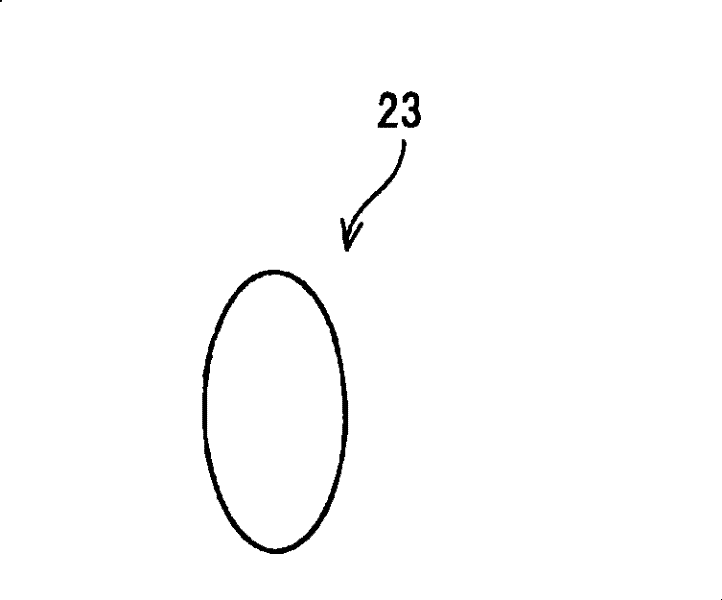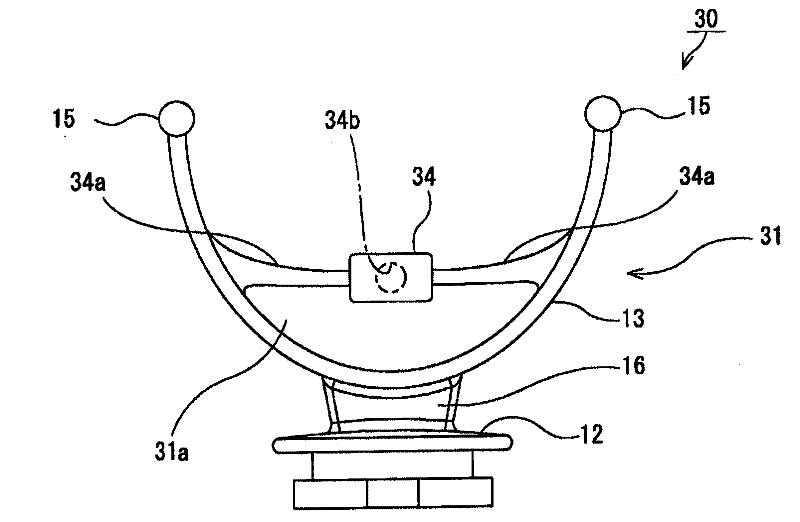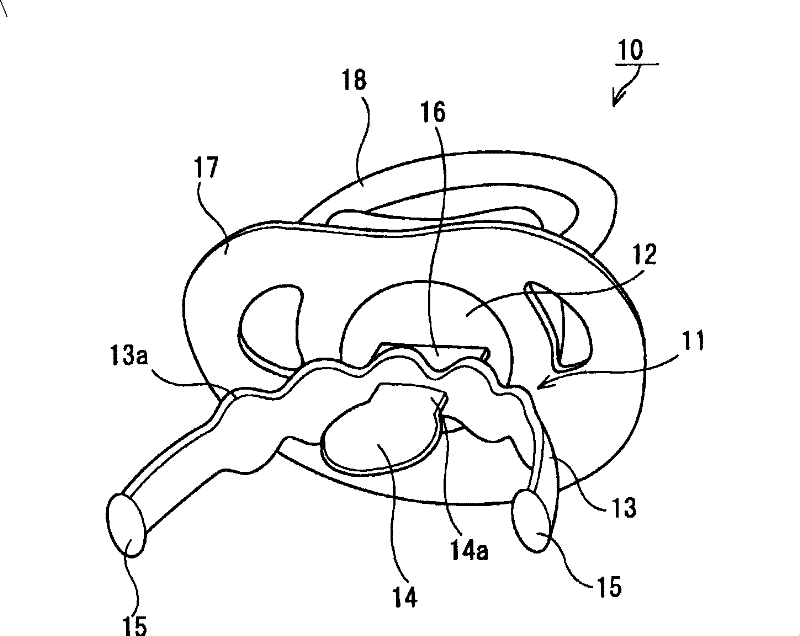Lip closing tool
A technology of closures and lips, applied in gymnastics equipment, elastic resistance devices, sports accessories, etc., can solve problems such as danger, accidental swallowing of straps, and respiratory effects.
- Summary
- Abstract
- Description
- Claims
- Application Information
AI Technical Summary
Problems solved by technology
Method used
Image
Examples
no. 1 Embodiment approach
[0049] figure 1 It is a schematic perspective view of the lip closer of the first embodiment of the present invention, figure 2 It is a schematic plan view of the state where the lip closure is placed in the oral cavity, image 3 It is a schematic longitudinal sectional view of a state where the lip closure is put in the oral cavity.
[0050] This lip closure 10 can be used for infants from lactation to weaning period, and adults who are the object of lip function training for nasal breathing recovery training, but the following description will be made for infants.
[0051] figure 1 It is a schematic perspective view showing the lip closure 10 before it is put into the oral cavity. The lip closer 10 in the figure has the main body 11 that inserts in the oral cavity and outside the oral cavity especially such as figure 2 As shown, the lip outer arrangement portion 12 is in contact with the outer side (outer surface) of the lips. In addition, it is preferable to have a s...
no. 2 Embodiment approach
[0072] Figure 4 as well as Figure 5 shows the second embodiment, Figure 4 It is a schematic perspective view of the lip closer of the second embodiment, Figure 5 is along Figure 4 A cross-sectional view of line A-A.
[0073] exist Figure 4 Among them, the lip closer 20 has a main body 21 , a lip outer arrangement part 22 and a pinch part 24 , and the main body 21 has a dentition outer arrangement part 23 , stimulation parts 15 and 15 and a lip contact part 16 .
[0074] Among them, parts with the same names are parts that perform substantially the same functions as those in the first embodiment, and parts with the same reference numerals are common structures, so repeated descriptions thereof will be omitted, and the following description will focus on differences.
[0075] In the present embodiment, most of the entire lip closure 20 is formed of a particularly soft material, for example, it is mainly formed of silicone resin.
[0076] The tooth row outer arrangeme...
no. 3 Embodiment approach
[0085] Figure 6 It is a schematic plan view showing the third embodiment, and shows a state in which the seat plate 17 in the first embodiment is removed.
[0086] exist Figure 6 Among them, the lip closer 30 is formed of the same material as that of the first embodiment, and has a main body 31 and a lip outer arrangement portion 12 . The main body 31 has the dentition outer arrangement part 13 , the stimulation parts 15 , 15 , the lip contact part 16 and the tongue contact part 34 .
[0087] Among them, parts with the same names are parts that perform substantially the same functions as those of the first embodiment, and parts with the same reference numerals are common structures, so their repeated description will be omitted, and the following description will focus on the differences.
[0088] In the lip stopper 30 of the third embodiment, the biggest difference from the first embodiment is the tongue contact portion 34 .
[0089] The tongue contact portion 34 has a l...
PUM
 Login to View More
Login to View More Abstract
Description
Claims
Application Information
 Login to View More
Login to View More - R&D
- Intellectual Property
- Life Sciences
- Materials
- Tech Scout
- Unparalleled Data Quality
- Higher Quality Content
- 60% Fewer Hallucinations
Browse by: Latest US Patents, China's latest patents, Technical Efficacy Thesaurus, Application Domain, Technology Topic, Popular Technical Reports.
© 2025 PatSnap. All rights reserved.Legal|Privacy policy|Modern Slavery Act Transparency Statement|Sitemap|About US| Contact US: help@patsnap.com



